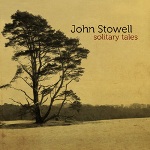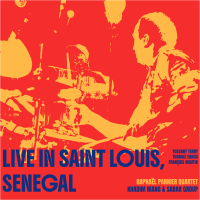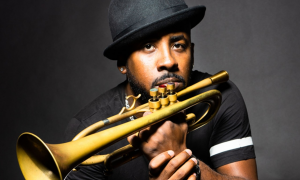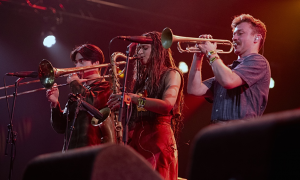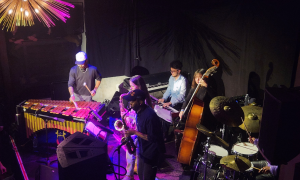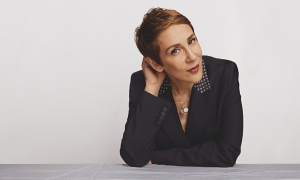Home » Jazz Articles » Live Review » Vision Festival 2009: Day 7 Finale
Vision Festival 2009: Day 7 Finale
Jason Kao Hwang's Spontaneous River / Trio X / Patricia Nicholson Dance / William Parker Quartet
14th Annual Vision Festival
Angel Orensanz Foundation for the Arts
New York City
June 15, 2009
For the final night of the Vision Festival the setting switched to the Angel Orensanz Foundation just a few blocks from the Abrons Arts Center in Manhattan's Lower East Side. Since the Festival was last held at Angel Orensanz in 2007 the space has undergone a facelift with a new lighting system installed and more comfortable wooden seating, though nothing can change the somewhat boomy acoustics of the old synagogue. Still it is a lovely space and it felt like being reacquainted with an old friend.
Though the bill might be slightly shorter this Monday evening, the quality on offer was stunning. Jason Kao Hwang's Spontaneous River was the festival's second project featuring string orchestra, following Butch Morris' Chorus of Poets and Strings on the opening evening, both confirming the Vision Festival's adventurous programming and confounding free jazz stereotypes. Alongside them were Joe McPhee and Trio X in their eleventh anniversary year and one of the most acclaimed modern jazz ensembles in William Parker's Quartet rounding off the Festival for another year.
- Jason Kao Hwang's Spontaneous River
- Trio X
- Patricia Nicholson Dance
- William Parker Quartet
- Festival Wrap Up
Jason Kao Hwang's Spontaneous River

It was a pleasure to see violinist Jason Kao Hwang's name finally heading the bill in his own right, having already featured in several supporting roles during the festival to date, primarily with dancers and poets. However this wasn't to be a showcase for his undoubted improvisational skills (that unexpectedly came later in the evening) but more for his compositional and organizational talents. His jazz ensemble Edge has released two exceptional offerings, Stories Before Within (Innova, 2008) making several best of year lists, which demonstrate his gripping arrangements, winning way with melody, and top notch blowing. But Hwang has broadened his artistic expression considerably in recent years with no diminution of its impact, as evidenced by his acclaimed chamber opera The Floating Box (New World Records, 2005) at one extreme and his duo with Korean Sang Won Park's zithers on Local Lingo (Euonymous, 2007), at the other.
Over thirty seats had been set out for Hwang's newest venture, Spontaneous River, to accommodate a veritable Who's Who of the City's creative string talent. Hwang himself was stationed on a platform in front of the stage along with score, violin and cue cards. Though premiered at Edgefest in October 2008 with a cast combining festival artists and local musicians, tonight was the first appearance of the piece in New York. Hwang orchestrated the assembled throng through guided improvisation which allowed ample space for individual and group cameos within its kaleidoscopic ambit during a 70-minute performance.
Prompting with his own violin, Hwang set up a curtain of shimmering bowing from the whole ensemble, before a crescendo and the first of many fleeting individual features from bassist Ken Filiano. Hwang would point at musicians to cue them up to solo and then orchestrate varied backing in support. Thus guitarist Dom Minasi's spindly musings were superimposed atop overlapping string lines, before Hwang indicated the other five guitars to join Minasi. Later picking out Henry Grimes to solo on violin, Hwang then set up a rhythmic tapping of bows for the rest of the orchestra. A crescendo led to a soaring melody from Tomas Ulrich's heartfelt cello, while a rippling section with Michael Bisio on bass bowing and shouting simultaneously also stood out.
Hwang also used cue cards to guide the ensemble. Holding up a card to one section of the orchestra inspired a swinging vamp from the six double basses and Andrew Drury on drums. Drury, a key member of Edge, was well-versed in Hwang's idiom and moved from exotic delicacy to thunderous discord during the piece, at one point eliciting unearthly screeches by scraping on a large metal sheet. Hwang supplemented the cards with a series of gestures in his conduction for diverse responses, whether drawing a Mexican wave of pizzicato flourishes from the orchestra, or setting up improvised duets or trios. All this resulted in a piece cinematic in scope which transcended genre, combining jazzy riffing, contemporary classical dissonance, sweeping romantic melody and free improv scrabblings, into an intoxicating whole. The end came with Hwang alone on his violin for a delicate finish greeted with a richly merited standing ovation.
Trio X
Jay Rosen and Dominic Duval
With a history now spanning over ten years and even more albums, reedman and trumpeter Joe McPhee, bassist Dominic Duval and drummer Jay Rosen, collectively known as Trio X, truly must have laid to rest the circumstances behind their name. First convening for a performance at the third Vision Festival in 1998, the group's moniker was adopted as a nonchalant reference to the lack of critical reception which greeted their work. Persistance has paid off and Trio X is now recognized as one of the stellar working bands in the avant jazz universe. Confirmation, if it was needed, came in the sumptuous 7 CD box set 2006 US Tour (CIMPoL, 2008) commemorating their eponymous journey through 5 states in eight days.
Like the box set, tonight's performance demonstrated that longevity is no hindrance to artistry in the right hands and found them still fresh and finding something new to say even on familiar material. And that brings up one of the prime attributes of Trio X as an avant jazz group: their deep affection and familiarity with the jazz tradition and its progenitors, with song forms and themes referenced within a spontaneously conceived framework founded on adventurous interplay. Each of the four pieces in their 50-minute set was dedicated to a recently past or present master (very present in one particular case,) making those connections explicit. As McPhee explained: "Though we are celebrating our eleventh year, the celebration is not about us but about those on whose shoulders we stand. We have the opportunity to play because of those who went before."
Bristling with attitude in dark glasses and matching attire, the three were clearly intent on promoting the cohesiveness of the Trio X brand as much through their appearance as their music. But it didn't really need any help. As Duval's fluent arco bass conjured a spacey relaxed start, first McPhee joined on alto saxophone, then Rosen on brushes, before all three embarked on a characteristic passage of loose interplay, with no leader and constantly shifting group dynamics whereby anyone might initiate a change of direction.

Joe McPhee
After another arco interlude from Duval, McPhee tenderly introduced the achingly beautiful title tune from Old Eyes (Hathut, 1980,) dedicated to Ornette Coleman, from a time when McPhee more regularly penned his own compositions. How they treated it was typical of their modus operandi whereby melodic fragments jostled with outside bluster. At first Duval's pizzicato fills empathetically underpinned McPhee's wavering cry, before Rosen upped the ante to provoke squealing saxophone and frantic plucking from Duval. Eventually McPhee cut through the cacophony with a restatement of the theme which called the band to order for a reverential ending.
Rosen not only manned the engine room, but managed at the same time to respond to whatever was going on around him with invention and subtlety. Quite capable of holding center stage just by himself (he even boasts a solo percussion record Songs For Samuel (CIMP, 2005)), Rosen demonstrated his acute sense of dynamics in a crisp solo introduction to a piece to celebrate Max Roach entitled "Taking it to the Max." Very controlled, using his drums as tuned percussion, he circled rhythmic motifs around his kit but still allowed his statements space to breathe, before McPhee joined with squalling tenor saxophone.
McPhee is justly feted. Once a free jazz enfant terrible, he now allies the power with a finely honed melodic sense, manifest in both standards and his own improvisations, all imbued with the deepest passion. As if that wasn't enough, he is also one of that select band who excel on both reeds and brass, as evidenced on Freddie Hubbard's "Little Sunflower." Though they first recorded the piece before the trumpeter's passing on their Sugar Hill Suite (CIMP, 2005), it was here offered as a celebration of Hubbard's artistry, though McPhee's rapidfire pocket trumpet runs made no attempt to emulate Hubbard. It wasn't until he switched to tenor saxophone that McPhee touched on theme. Then swaying back and forth, stepping back, planting legs akimbo and leaning back, as the throbbing beat continued, he screamed through the saxophone, an emotionally charged effect, provoking one of those wonderful spine tingling moments.
In Duval, McPhee has met his match. Though with a similar love of melody and the American songbook, Duval can mix it up with the best, as testified by his ten years as Cecil Taylor's bassist of choice. He provided compelling counterpoint to McPhee throughout, as well as shaping the flow, sometimes redirecting energies with a chordal riff or his adventurous bowing.
Years of playing together meant that even complete improvisations took on a satisfying and cohesive sense of purpose that would be hard to achieve even through composition. A wonderful example was provided by their closing number. Introduced by McPhee as: "A piece for gentleman who played earlier whose 3 November birthday I share," McPhee dedicated "Remembering the Call" to Henry Grimes, Perry Robinson and Tom Price, who combined for Grimes' celebrated The Call (ESP, 1965). However as McPhee went on to explain, this was a spontaneous composition and he had no idea of where it would go. We needn't have worried. After a gentle starts with Rosen on brushes and Duval pizzicato, McPhee's alto saxophone leapt into the interstices with a wailing clarion call. A very reverential passage between the saxophonist and the bassist culminated in beautifully poignant extemporized melody, shaded with cymbal washes. Such was the audience enthusiasm that the applause started even before they had finished, testament to one of the festival's most outstanding sets.

In a change of pace, Patricia Nicholson (pictured left) was joined by her daughter Miriam Parker, Jason Jordan and Mariko Kumanomido for some energetic and expressive free form dance. Accompanying them were partner William Parker on bass, Jason Kao Hwang returning on violin and Cooper-Moore on hand- crafted percussion with a flowing rhythmic improvisation.
After his triumph earlier in the evening Hwang seemed to play with particular abandon, and it was a revelation to hear him in this pared-down setting. His fast sinuous bowing moved from tension to joyous release in wave after wave of mercurial invention over Cooper-Moore's madcap percussion and Parker's propulsive throb. Parker in particular gave a butt-shaking rhythmic masterclass, with one infectious riff begun as the dancers were leaving the stage drawing them back irresistibly back for a final coda, which drew an enthusiastic response from band and audience alike. This was excellent music which would have easily stood on its own merits, and hopefully seeding the thought of Hwang exploring such a format further.
Closing out the festival in style was the William Parker Quartet featuring Hamid Drake on drums, Rob Brown on alto saxophone and Lewis Barnes on trumpet plus special guests Bobby Bradford on cornet, James Spaulding on alto saxophone and the ubiquitous Billy Bang on violin. Parker's Quartet has become one of the most acclaimed units in contemporary jazz since their inception back in 2000 with O'Neals Porch (Aum Fidelity, 2002). On the back of regular touring, a sequence of knockout discs has followed with Petit Oiseau (Aum Fidelity, 2008) just the most recent. Further recognition arrived with both Parker and Drake featuring in the Jazz Journalist Association Awards for 2009, long overdue some might say.

William Parker
So in demand are they that this was the fifth opportunity to hear Parker and Drake in tandem during this festival, and their breath-taking rhythmic alchemy was at the core of the Quartet. Though billed as a new composition "Light Cottage Draped in a Curtain of Blues" their performance sounded more like a suite-like mash up of familiar themes, with "O'Neal's Porch" and "Gilmore's Hat" clearly recognizable, but with the presence of guests evoking almost a jam session vibe. Brown and Barnes' years in the band meant they only needed the merest rhythmic hint of a theme to seamlessly lock into the heads which were torn up with a practiced panache, leaving the guests to step forward for solos.
However, Brown was the standout soloist, full of deliberate distortions to color the notes, fluent at high speed and never retreading ideas in his unfurling, long-form expositions. He has been a fixture in Parker's bands ever since the early '90s, and it's easy to see why. Once you find someone this good, why would you let them go? Not that Barnes is any slouch. His trumpet, alternately tart and soulful, made a winning combination with Brown's bittersweet tone. Of the guests Spaulding was perhaps the pick, his alto saxophone soaring over traffic jam horns early on, then hitting on a riff until the rest of the horns picked it up as backing at which point he spiraled up above . Bradford's cornet was abstractly mellifluous , while Bang played pizzicato to round out some of the ensembles, but soloed with his customary verve and rhythmic attack.
But it was the superb expansion and contraction of time by Parker and Drake that in itself proved the highlight. It is hard to think of any other pairing active today with such seeming telepathic communication and ability to instantly adjust, making the outcome appear rehearsed rather than of the moment. Drake has said "With William [Parker] I feel that rhythmically I can go anywhere I want and he can respond," and that is the feeling that the listener got as well from what almost seemed like a sequence of Parker's greatest hits.
Even when one of the pair soloed, they came out of it with another groove. Case in point, Parker's feature involved strumming while moving his hands up, down and along the fingerboard in karate fashion to produce a rippling locomotive rumbling, which became ever quieter, until he finished it with the riff to the bouncy "Wood Flute Song" from Sound Unity (Aum Fidelity, 2005). Straightaway Brown and Barnes were on to it before giving way to a garrulous five horn chorale over a relentless rhythm. One by one they eventually pulled back to leave Bang bowing along with the rhythm duo. Drake slipped into a heavy 4/4 and the horns improvised a riff behind the ebullient Bang for a grandstand finish and a fantastic good time end to the festival, leaving an ecstatic audience calling for more.
Building on a solid start, the Festival just got stronger and stronger through the seven days with outstanding sets becoming commonplace by the end. Of the 34 shows on the main stage, the cherries on the cake were Roy Campbell and Joe McPhee's Ayler Project, Seth Meicht's Big Sound Ensemble, Matthew Shipp's solo set, the Rob Brown Trio, Planet Dream, the Fred Anderson Trio, Dickey/Yamamoto/ Carter, and Trio X, but it must be said that it was a very good cake.
As the audience dispersed, thoughts turned to the future. In the current economic climate nothing can be taken for granted, and as other festivals fall by the wayside, the need for the Vision Festival as a showcase for the underexposed medium of avant jazz, free jazz, creative improvised music, call it what you will, remains as much as ever. The Vision Festival has been largely the brainchild of one woman, Patricia Nicholson. Each year it is a labor of love which relies on support from musicians, the Lower East Side artistic community, volunteers and the audience. Go to the Vision Festival website to find how you can contribute.
Tags
PREVIOUS / NEXT
Support All About Jazz
 All About Jazz has been a pillar of jazz since 1995, championing it as an art form and, more importantly, supporting the musicians who make it. Our enduring commitment has made "AAJ" one of the most culturally important websites of its kind, read by hundreds of thousands of fans, musicians and industry figures every month.
All About Jazz has been a pillar of jazz since 1995, championing it as an art form and, more importantly, supporting the musicians who make it. Our enduring commitment has made "AAJ" one of the most culturally important websites of its kind, read by hundreds of thousands of fans, musicians and industry figures every month.



